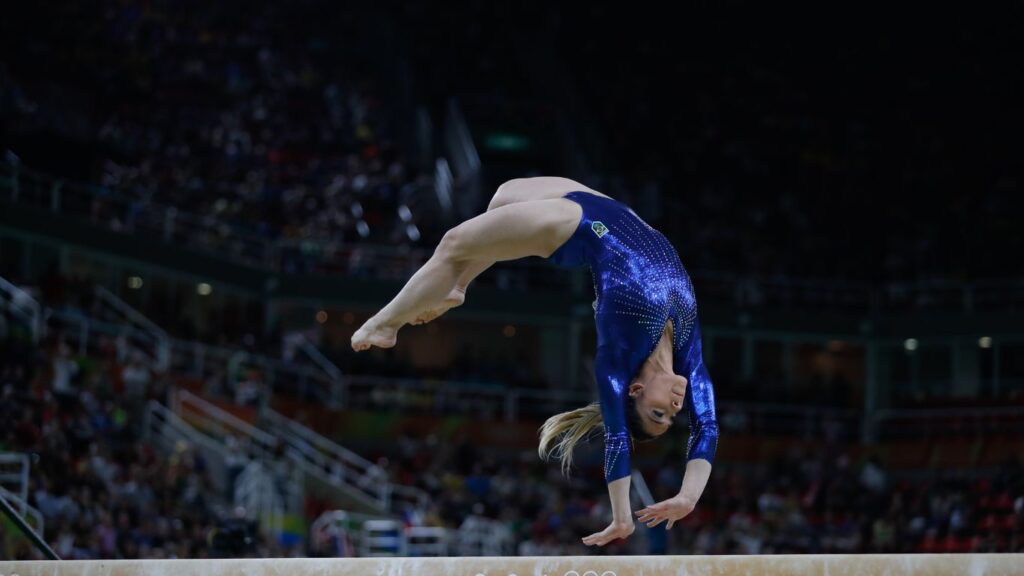Flexibility is a fundamental aspect of athletic performance, impacting an athlete’s ability to move efficiently and effectively. Enhanced flexibility allows for a greater range of motion, which can improve technique, increase speed, and reduce the risk of injuries. For instance, flexible muscles and joints enable smoother, more coordinated movements, which are essential in virtually all sports, from running and swimming to gymnastics and martial arts. But one critical area that often gets overlooked is neck flexibility. It is common for athletes to focus on the flexibility of their limbs and core, but the neck also plays a vital role in overall performance. The neck supports the head, facilitates crucial movements, and maintains balance and stability. Neglecting neck flexibility can lead to stiffness, limited range of motion, and an increased risk of injuries, particularly in contact sports and activities requiring rapid directional changes. Therefore, incorporating neck flexibility exercises into an athlete’s routine is essential for optimal performance and injury prevention.
The Connection Between Neck Flexibility and Athletic Performance
Understanding Neck Flexibility
Neck flexibility refers to the ability of the neck muscles and joints to move freely and without pain through a full range of motion. This encompasses several components, including:
- Range of Motion: The extent to which the neck can move in various directions, such as rotation, lateral flexion, flexion, and extension.
- Muscle Elasticity: The capacity of the neck muscles to stretch and return to their original length, which is crucial for smooth and efficient movement.
The neck, or cervical spine, consists of seven vertebrae (C1-C7) that support the skull and protect the spinal cord. Key muscles involved in neck movements include:
- Sternocleidomastoid: Facilitates rotation and flexion of the neck.
- Trapezius: Supports shoulder movement and helps extend the neck.
- Levator Scapulae: Assists in elevating the scapula and tilting the neck.
- Scalenes: Aid in lateral flexion and stability.
The Role of Neck Flexibility in Athletic Performance

Neck flexibility significantly contributes to better movement and coordination by allowing athletes to perform actions more smoothly and efficiently. A flexible neck enhances the range of motion, enabling quicker and more precise head movements, which are vital for maintaining balance, tracking moving objects, and coordinating body movements.
In sports like swimming, neck flexibility helps streamline the head position for optimal breathing and reducing drag in the water. In gymnastics, a flexible neck supports graceful transitions and the ability to look in various directions without hindrance, essential for performing complex routines. In martial arts, neck flexibility aids in rapid head movements to dodge attacks and maintain a stable stance during quick directional changes.
Overall, improved neck flexibility enhances an athlete’s ability to react swiftly and maintain better control over their movements, which can lead to superior performance and a competitive edge in various sports.
Benefits of Improved Neck Flexibility
Injury Prevention
Flexible neck muscles play a crucial role in reducing the risk of strains and sprains. When the neck muscles are supple, they can absorb and distribute forces more evenly during sudden movements or impacts, minimizing the likelihood of injury. This is particularly important in contact sports like football or wrestling, where the neck is often subjected to rapid and forceful movements. Regular stretching and flexibility exercises can help maintain the elasticity of neck muscles, making them less prone to injuries.

Enhanced Balance and Stability
Neck flexibility is closely linked to balance and stability. The neck houses proprioceptors, sensory receptors that provide the brain with information about the position of the head and neck in space. A flexible neck allows these proprioceptors to function optimally, helping athletes maintain better balance and stability during dynamic movements. For example, in sports like gymnastics or dance, where precise balance and posture are crucial, a flexible neck can significantly enhance performance and prevent falls.
Improved Reaction Time
A flexible neck enables quicker and more efficient head movements, which are essential for fast reaction times. In sports like boxing or tennis, where rapid head movements are necessary to track an opponent or a fast-moving ball, neck flexibility can provide a competitive edge. By allowing for faster and more accurate head turns, a flexible neck helps athletes respond more swiftly to visual stimuli, improving their overall reaction time and performance.
Sports and Activities Requiring Optimal Neck Flexibility
List of Sports
- Wrestling: Athletes need a flexible neck to avoid and escape holds while maintaining strength and stability.
- Boxing: Quick head movements are vital for dodging punches and maintaining balance.
- Diving: Divers require neck flexibility for precise head positioning during twists and somersaults.
- Swimming: Efficient breathing techniques depend on a flexible neck to reduce drag and improve stroke efficiency.
- Gymnastics: Complex routines demand a flexible neck for seamless transitions and balance.
Professional Athletes
- Floyd Mayweather (Boxing): Known for his defensive skills, Mayweather’s training includes exercises that enhance neck flexibility and strength.
- Michael Phelps (Swimming): Phelps incorporated neck flexibility exercises to optimize his streamlined position and breathing technique.
- Simone Biles (Gymnastics): Biles includes comprehensive flexibility training, including neck exercises, to perform her high-difficulty routines with precision.
Common Mistakes and How to Avoid Them

Typical Errors
- Overstretching: Trying to push beyond the natural range of motion can lead to strains and injuries.
- Poor Posture: Performing exercises with incorrect posture can strain neck muscles and reduce effectiveness.
- Inadequate Warm-up: Skipping warm-up can make muscles stiff and prone to injury during stretching.
Tips for Proper Technique
- Gentle Stretching: Stretch within a comfortable range and gradually increase the intensity.
- Maintain Good Posture: Keep the spine aligned and avoid slouching during exercises.
- Warm-up: Perform light cardio or dynamic stretches to warm up the neck muscles before flexibility exercises.
Conclusion
Neck flexibility is a crucial yet often overlooked aspect of athletic performance. It plays a significant role in injury prevention, balance, stability, and reaction time. By incorporating neck flexibility exercises into their training routines, athletes can enhance their overall performance and reduce the risk of injuries. From wrestling to gymnastics, professional athletes recognize the importance of maintaining a flexible neck to achieve peak performance. Prioritizing neck flexibility is essential for athletes who aim to improve their capabilities and gain a competitive edge in their respective sports.
Also read: Preventing Hamstring Injuries: Tips and Exercises
